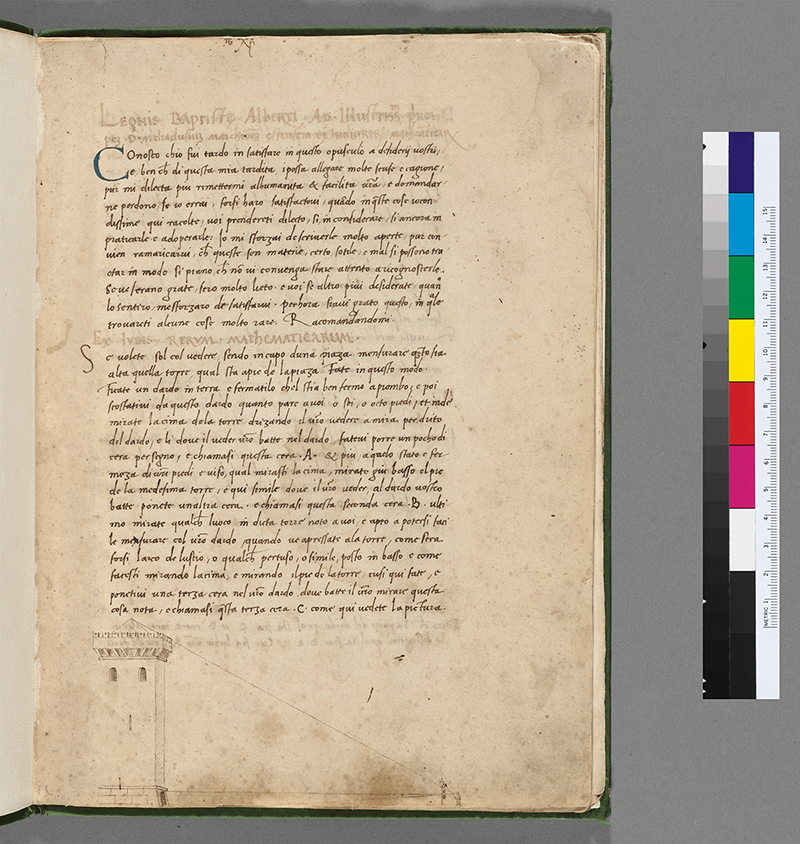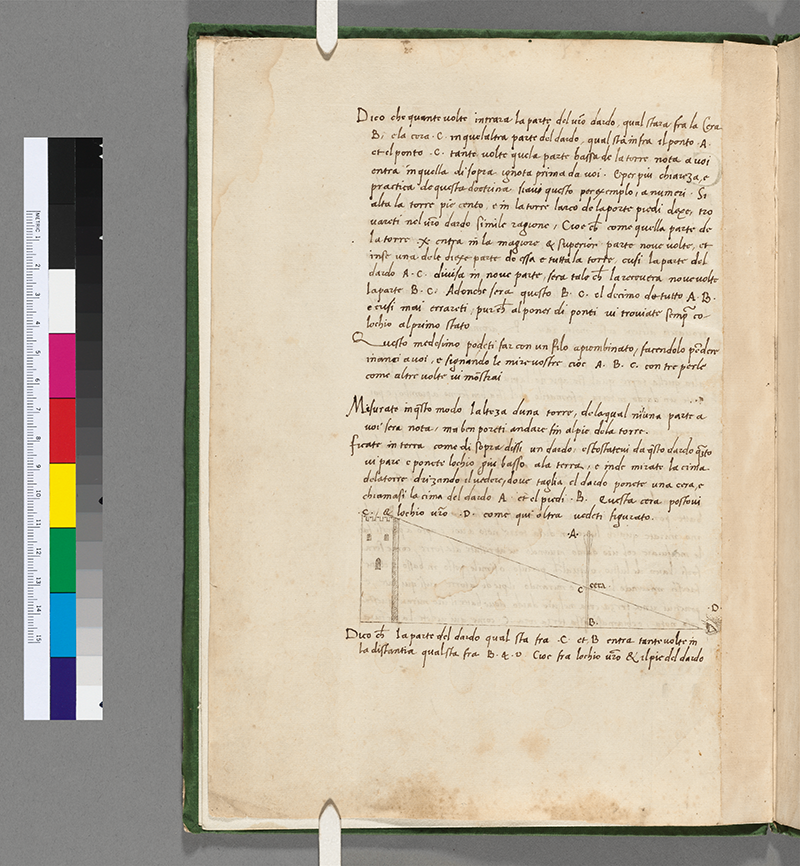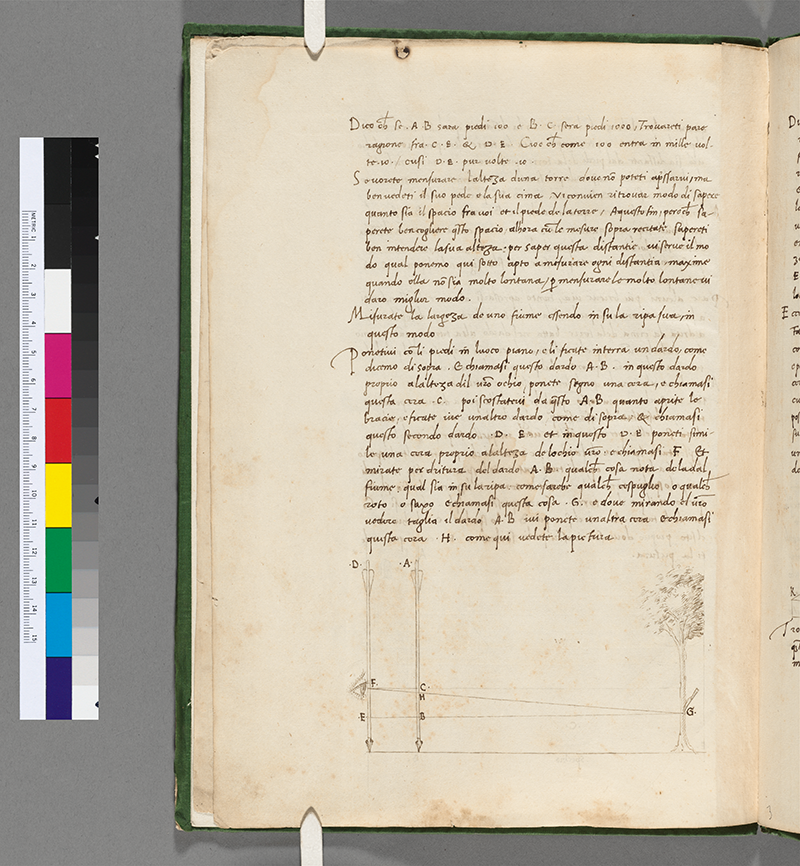- About MAA
- Membership
- MAA Publications
- Periodicals
- Blogs
- MAA Book Series
- MAA Press (an imprint of the AMS)
- MAA Notes
- MAA Reviews
- Mathematical Communication
- Information for Libraries
- Author Resources
- Advertise with MAA
- Meetings
- Competitions
- Programs
- Communities
- MAA Sections
- SIGMAA
- MAA Connect
- Students
- MAA Awards
- Awards Booklets
- Writing Awards
- Teaching Awards
- Service Awards
- Research Awards
- Lecture Awards
- Putnam Competition Individual and Team Winners
- D. E. Shaw Group AMC 8 Awards & Certificates
- Maryam Mirzakhani AMC 10 A Awards & Certificates
- Two Sigma AMC 10 B Awards & Certificates
- Jane Street AMC 12 A Awards & Certificates
- Akamai AMC 12 B Awards & Certificates
- High School Teachers
- News
You are here
Mathematical Treasure: Alberti's Methods for Measuring Heights
Leon Battista Alberti (1404-1472) was an Italian humanist who could serve as a model for “the Renaissance man.” He was active in many fields but is particularly remembered for his work in architecture. In a very unusual manuscript written in his own hand, Ex ludis rerum mathematicum (Mathematical Tricks, or Special Techniques), he provided the reader with several geometrical methods to determine inaccessible heights. All his solutions are based on the employ of similar triangles.

On the opening page, the observer uses a vertical sighting staff.

In the illustration above, the staff is replaced by an arrow, perhaps a more conveniently available object.

Employing the principle that in viewing an object through a reflection, the angle of incidence equals the angle of reflection, sighting off the water surface in a fountain provides the means to construct similar triangles.

Finally, Alberti demonstrated a more complicated sighting situation employing two arrows.
The images above were obtained through the cooperation of The Houghton Library, Harvard University, Cambridge, Massachusetts.
Frank J. Swetz (The Pennsylvania State University), "Mathematical Treasure: Alberti's Methods for Measuring Heights," Convergence (January 2016)




